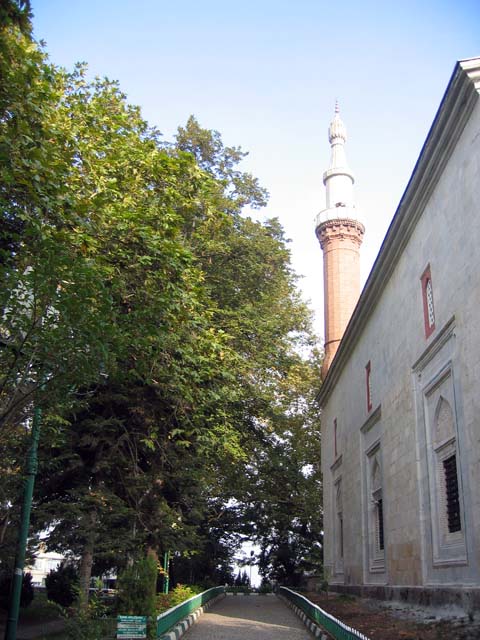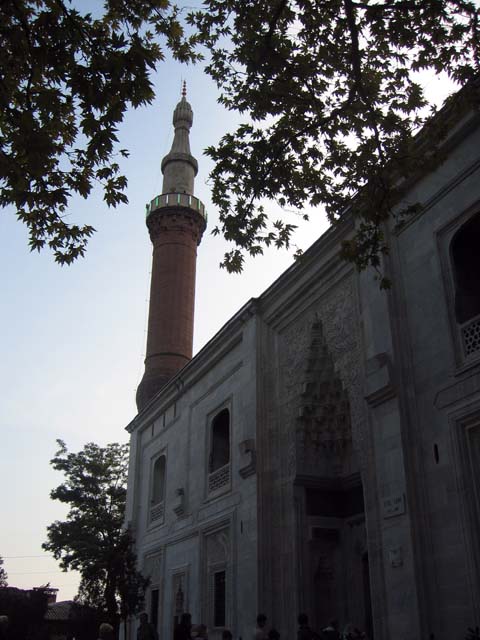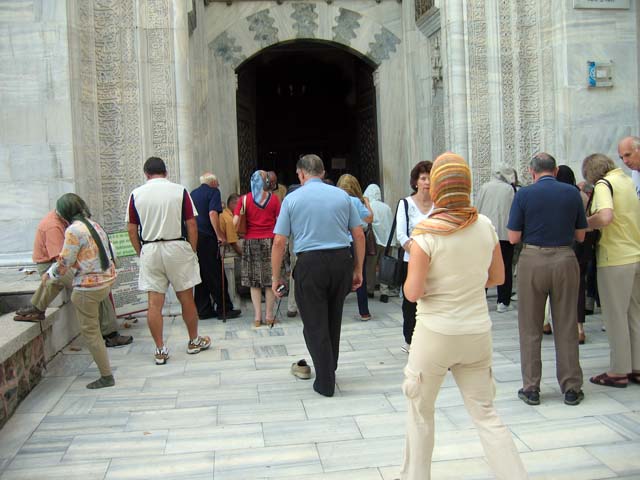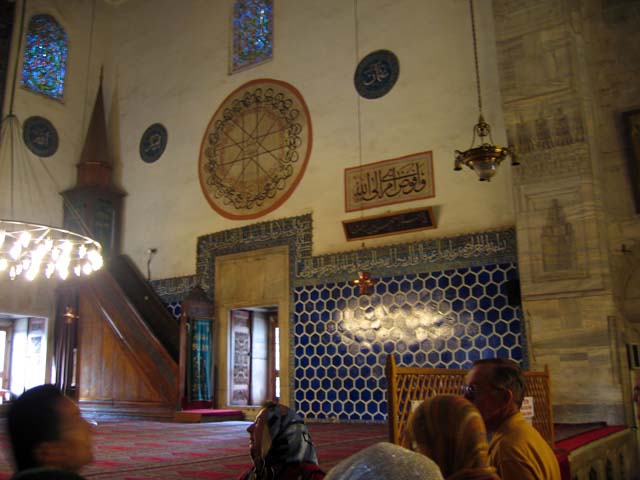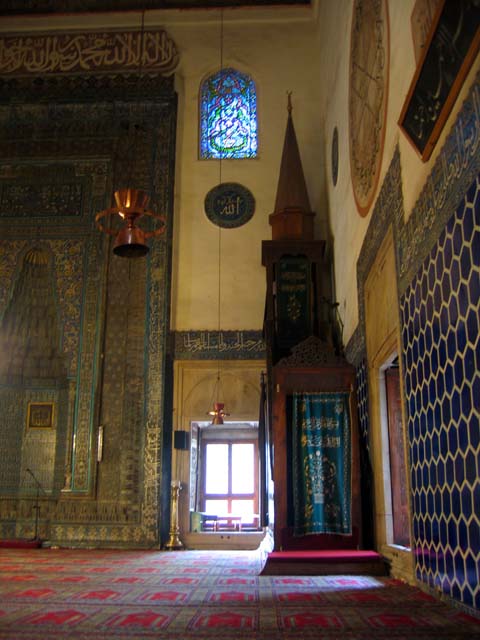|
The city of Bursa is known to Turks as yeşil Bursa, or "green Bursa." This mosque is sometimes called the Green Mosque, possibly because of that, or possibly because it's located next to the Green Tomb of Mehmet I. But whatever the reason, actually the Green Mosque isn't really green. The outside of the mosque was once decorated with tiles, but these have disappeared over time.
Mete tells us all about it.
That's the Green Tomb. We didn't go there.
We went here. To the Green Mosque.
But first we removed our shoes.
The cold marble got our attention.
The Green Mosque, which isn't really green, was commissioned by Mehmet I in 1412, but it remained unfinished at his death in 1421 and still lacks a portico. Nevertheless it is the finest Ottoman mosque built prior to the conquest of Constantinople.
The tiling of the prayer hall was carried out by Ali Ibn İlyas Ali, who learned his art in Samarkand. This was the first time that tiles were used extensively in an Ottoman mosque, and it set a precedent for the later widespread use of İznik tiles.
The tiles covering the walls of the prayer hall, which is well lit by floor-level windows, are simple, green and hexagonal. See that big niche over there on the left? That's called a mihrab, and it marks the direction of Mecca. The prayer hall is laid out so that most people can see the mihrab. The Green Mosque is notable for its glorious mihrab, set off by the beautiful blue-green hexagonal tiles on the walls around it. Predominately turquoise, deep blue and white, with touches of gold, the mihrab's tiles depict flowers, leaves, arabesques and geometric patterns. I got all that from my Eyewitness Travel Guide.
|

